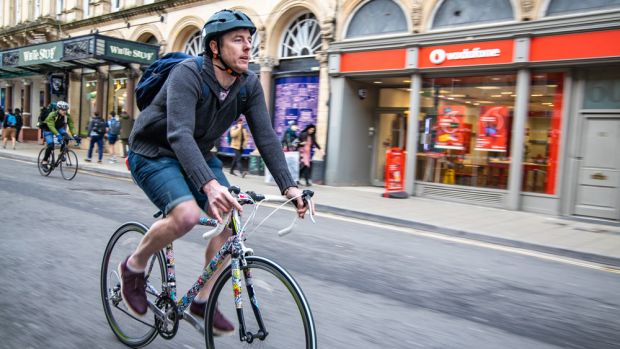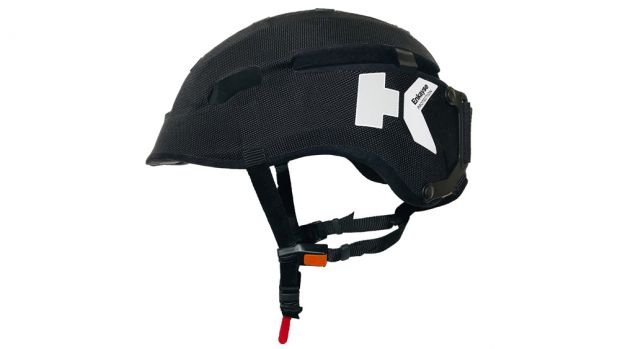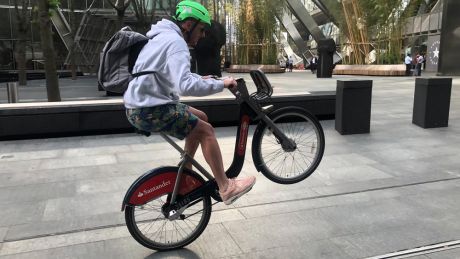You can trust Coach
If I were to spend more on a cycle helmet I would pay for extra safety. As a cyclist who almost exclusively cycles to the office on busy urban roads I’m not fussed about performance features like aerodynamics, or even the comfort provided by a better fit or improved ventilation. The Hedkayse ONE certainly costs more than most commuter-orientated helmets at £150 and it has a good claim to be a safer helmet. It’s the first helmet to be able to absorb multiple impacts and still work even after a major crash, a claim the company makes after extensive testing with standards company BSI Ltd.
Standard bike helmets are made from expanded polystyrene (EPS) and are sacrificial. In the event of a big impact they fracture to dissipate the force of the hit and therefore need to be replaced. The Hedkayse ONE uses a patented material called Enkayse which recovers after impact. So if you don’t want to have to pay to replace your helmet after a major crash the Hedkayse ONE is for you, although I doubt anyone would resent spending £30 on a budget model if the former helmet did its main job of protecting your head successfully.
The real advantage of Enkayse, in my opinion, is its ability to reliably deal with drops and minor knocks. That’s in contrast to EPS, which absorbs those minor impacts in an unpredictable way. This means you can’t tell how much of an effect dropping it on the floor or knocking it against a door will have on the helmet’s ability to absorb a bigger impact.
As someone who uses a bike daily I am continually banging my helmet around – a lot more, I assume, than a road cycling enthusiast who puts on their helmet for a long weekend ride and then puts it back on the shelf afterwards. It’s that crucial distinction that makes the Hedkayse ONE potentially safer for commuters like me who are a bit clumsy with their helmet.
See related

So is it worth paying such a premium for the extra protection? That’s not a question I can confidently answer. I can unequivocally say all helmets meet the same set of minimum standards, but beyond that it’s hard to verify any manufacturer’s claim. And while Enkayse is a welcome development in helmet safety, it’s not the only one of note of late. MIPS (Multi-directional Impact Protection System) came to prominence a few years ago and adds extra protection against the rotational forces from angled hits with a slip liner. MIPS has been widely adopted and you can find it in helmets that cost as little as £45, so if safety is your number one concern there’s an argument to be made for buying a budget helmet with MIPS, being careful with it, and replacing it according to the manufacturer’s recommendation. It’ll still take you three editions before reaching anywhere near the cost of the Hedkayse ONE.
There are two other reasons to spend more on the Hedkayse ONE, but I’m not convinced by either of them. The first is that the helmet is claimed to be foldable, which is stretching the term somewhat. The helmet is made of five connected panels which run from front to back, and to fold it you open a Velcro strap at the back of the helmet, pulling out the central “whale tail” which allows the helmet’s sides to squish together. It means it’s easier to fit it in a decent-sized backpack but it doesn’t get anywhere near as small as the Morpher or Overade Plixi folding helmets.
The other major difference from a traditional helmet is that the Hedkayse One is one-size-fits-all, so it can be shared with other cyclists. I struggle to see the advantage of this for the individual. Sharing this helmet with my partner, for instance, means I’d never ride with them or even at the same time as them. And for anyone without a family, or anyone living with people to whom they wouldn’t want to lend their helmet, the whole concept is of no benefit.

To realise this difference, there’s a unique strap system which took me five to ten minutes – watching an instructional video and fiddling – to achieve the proper fit. If I had to spend time adjusting straps because another family member had used it, I’d inevitably bodge it and ride with a crappy fit a lot of the time. Since a helmet’s ability to protect you can be nullified by a poor fit, this, for me, is the final nail in the coffin of the notion of sharing a one-size-fits-all helmet.
The helmet doesn’t feel uncomfortable or overly hot while riding, but it’s not as comfortable as a traditional budget helmet and at 495g it’s significantly heavier too – a cheap EPS lid can weigh something like 270g. Looks-wise the ONE scores well: the outer has a webbing texture which is classier than the usual plastic, and it’s available in black and grey, or brighter colours such as yellow, purple, blue and red for better visibility. There are also reflective stickers, which never hurt.
I applaud the attempt to make something different, but beyond the new multi-impact material Enkayse, I don’t think the other developments on the Hedkayse ONE offer enough to justify the extra outlay. Given the choice, I’d prefer a cheaper, more traditional design with Hedkayse’s material and MIPS.
Buy from Hedkayse | £150

Jonathan Shannon was the editor of the Coach website from 2016 to 2024, developing a wide-ranging experience of health and fitness. Jonathan took up running while editing Coach and used the training plans on the site to run a sub-40min 10K, 1hr 28min half marathon and 3hr 6min marathon. He’s an advocate of cycling to work and is Coach’s e-bike reviewer, and not just because he lives up a bit of a hill. He also reviews fitness trackers and other workout gear.

